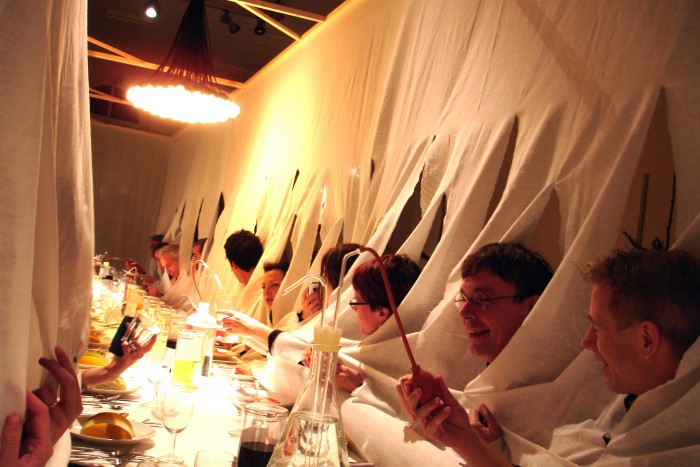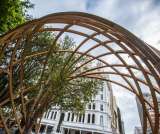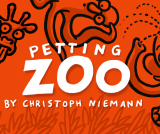
Dutch designer Marije Vogelzang laid out a feast of delicious ideas that the audience gobbled up at this year’s Design Indaba, now on in Cape Town: tablecloths of dough draped over shapes so it dries into edible bowls, revolvers made out of sugar to represent what it does to your body, peppers tattooed with adjectives that tell you what the food inside will do to you rather than what it is.
Vogelzang, a young food designer who must be the belle of the Dutch design scene with her culinary mise-en-scène, says she became interested in food as a material when she was studying industrial design, working with different materials.
This is more than being a chef, a food stylist or an experimental cook. Vogelzang, like many of the other speakers, raised the issue of trying to explain to others what they do. It seems those of us out of the inner creative circle battle with the concept of making money out of design. Vogelzang said that her grandmother thinks she makes party cakes, decorated with “dolphins and palm trees”.
But what she’s doing is focusing on engaging the eater in the concept of food; in fact, enhancing and challenging the act of eating. The focus here is on eating as a verb, on the act itself, which involves sharing, memory, biology, health and many other issues.
Her design studios/restaurants in Rotterdam and Amsterdam are called Proef, the Dutch word that can be translated as “tasting” as well as “testing”. Appropriate, given that she uses her space as a laboratory, a place to visualise food design and experiment with different materials.
This is food as theatre. Food as art. When she opened in Rotterdam, guests were asked upon their arrival for their date of birth and given a coloured ribbon. They were then served food that matched their birth element, such as fire, earth or water. Guests were not told why they were served specific food. The experience, Vogelzang explained, made people aware of what they were eating and triggered many discussions around the food and the act of eating.
She has reconceptualised life’s rituals and reinterpreted them with food. While a student, Vogelzang noticed that white is the colour of death in many cultures. “The ritual of death in Holland is poor: we wear black, have sad faces and have a cup of coffee and a piece of sponge cake. And that’s it. So I wanted to make an alternative for Dutch people who want to have more of a ritual. My alternative is a dinner, with naturally white food.”
What she noticed is that all the ingredients of all white food match up very well. The tastes of it. Soft and sour. Salty and sweet. Perfect for a funeral, really. Who would, she asks, want to eat a bloody steak at a funeral?
I particularly liked her reconfigurement of the Christmas dinner, another ritual so often off the mark and filled with predictability and cliché. The picture above is off Proef’s website. With a tablecloth up in the air instead of hanging down, she could concretise a “communist idea”: if everyone is in the tablecloth, you are all the same. “You are also all connected to each other.” Isn’t this the point of Christmas dinner for most of us? Sharing based on the idea of being together and eating together. Even the plates were divided in half: each person would have to share their meal to complete the experience. One guest was served melon; another ham. And so on …
The act of living and eating provides Vogelzang with the ingredients she needs for innovation and invention. She plays with the senses (“We don’t use our noses nearly enough”); chemistry (what different foods are known to do to our bodies); culture (she invoked memory among the survivors of World War II to whom she served food made from war-time ration ingredients); growing (you can, apparently, eat vegetables grown in the dark in her restaurants); and the strange society in which we live.
I loved Vogelzang’s presentation not only because I’m obsessed with food, but also because it showed how thinking about something in a new way is design. Bon appetit, I say.










